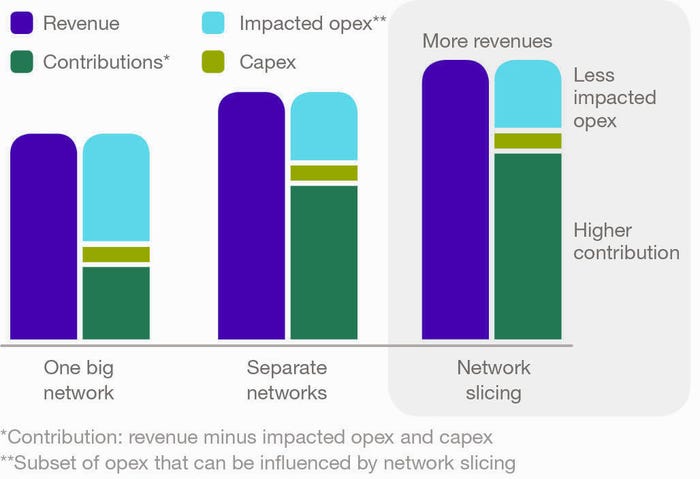Ericsson and BT extol the virtues of network slicing
A study jointly undertaken by Ericsson and BT was as surprised as anyone to find that a technology the telecoms industry is already committed to is a good idea.
September 20, 2017

A study jointly undertaken by Ericsson and BT was as surprised as anyone to find that a technology the telecoms industry is already committed to is a good idea.
That two companies with a massive vested interest in network slicing should conclude it’s great is, of course, not an earth-shattering surprise. But once you scratch underneath the surface there are some interesting insights into just how we’re likely to utilize the technology, especially in the context of IoT.
There was also a big caveat: network slicing needs to be coupled with operational automation to deliver much of the promised ROI. Network slicing is all about sub-dividing the network to allow bits of it to be devoted specialist tasks. It stands to reason that this process should be highly automated, but the study seems to be saying this automation needs to stretch into the back office too.
“We found that over a five-year period, introducing new services by using network slicing and operational automation generated 35 percent more revenue than by using one multi-service network,” said Marielle Lindgren, Head of Ericsson UK. “The revenue increased 15 percent when compared to several networks with dedicated resources, demonstrating how the technology enables market stimulation, faster time to market, and opportunities from smaller niche services.”
“The more services we deploy with network slicing, the greater economic benefit we will see, enabling us to better serve our customers,” said Maria Cuevas, Head of Mobile Core Networks Research at BT. “In order to achieve this vision, it is important that the industry provides cost-effective solutions to support end-to-end orchestration and adds automation to the operations and management of network slices.”
IoT, we’re told, can itself be subdivided into ‘critical’ and ‘massive’ varieties – the former putting the emphasis on low-latency and the latter on low-power. It’s expensive and inefficient to provide these facilities when they’re not needed either over one big network or using separate specialized ones, so that’s where network slicing comes in.
The purpose of this study was to quantify the potential economic benefits of all this network cleverness. The graphic below summarises the study’s findings in terms of revenues and subsequent incremental ‘contribution’ to the operator’s bottom line once you subtract capex and opex. It’s a bit crude, but makes its point.

Here’s the stated methodology. The study examined capex, impacted opex and revenue consequences of new service introductions across three scenarios. We wanted to remove the economic impacts of virtualization so that the common baseline (starting point) for each scenario was a virtualized core network. It also assumed that a mobile broadband service has 25 million subscribers on the network.
The study ramped up to 40 unique service type launches per year, each requiring different network design and validation efforts. This included a steady mix of 60 percent C-MTC and 40 percent M-MTC services. There was also a rough assumption of an automation investment included over three years for network slicing.
The underlying message is that investing in network slicing tech will pay off in the long term. Again this is hardly surprising coming from a networking vendor, which is probably one of the reasons it got an operator involved to add a bit of objectivity.
5G will clearly require a degree of network specialization and it stands to reason that this would be more efficiently done over one unified infrastructure. But just as with technologies such as NFV and SDN, theoretical studies are one thing and actually making the magic happen in the real world is quite another.
About the Author
You May Also Like










.png?width=300&auto=webp&quality=80&disable=upscale)


_1.jpg?width=300&auto=webp&quality=80&disable=upscale)